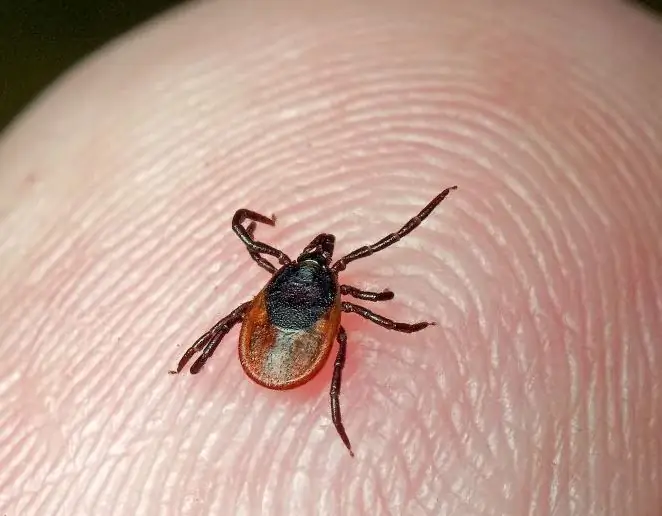There are currently more than 48 thousand ticks of various species in the world. They live on all continents of the planet in all weather conditions.

Instructions
Step 1
Most of the mites, which are arachnids, are not interested in humans and do not pose a danger to them, since their diet consists of smaller arthropods and soil fungi. Due to some of their relatives, they have the same infamous vector of various infections. The main danger is in the ability of ticks to transfer encephalitis, but in addition to this disease, they also carry tick-borne typhus, hemorrhagic fever, Lyme disease, and relapsing tick-borne typhus. A spider mite does not touch a person, but it does great harm to indoor and garden plants, and a considerable number of ticks infect domestic animals. Most often, an encephalitis tick is mentioned as the most dangerous, but its descriptions are often contradictory. No one wants to face an infection, which sometimes leads to death, which is why its description is so important. But the fact is that encephalitis ticks are not a separate species, and any tick can be infected. It is impossible to determine by appearance whether this particular tick is carrying the infection.
Step 2
However, among others, the main vector of encephalitis can be distinguished - this is the ixodid tick, also called hard for its chitinous cover. Taiga and dog ticks are also ixodid ticks, they carry encephalitis. To prevent infection, you need to know in which places these ticks prefer to live and not appear there without protective equipment. The ixodid tick loves moisture and is found in moderately shaded mixed forests, which is why it was named forest and taiga tick. With a very high probability you can find them at the bottom of a ravine, near a stream, near forest paths overgrown with tall grass. If the tick manages to catch on clothing, it will crawl up in search of exposed skin. Hence the false belief that ticks jump on top of a person, because they find them on the head and neck. The size of the ixodid tick is considerable, up to 25 mm.
Step 3
They carry encephalitis and argas mites, called soft for their soft cover, and for the way of living - trapping. Argas mites live in grottoes, caves, burrows, deep cracks, nests. They can be found in older homes, where they prefer cracked walls, debris on the floor, and dust. They prefer adobe structures for habitation. People are most often attacked at night. A distinctive ability of these centenarians is that they can starve for up to 14 years, and the infections carried by them persist for up to 10 years. Soft mites are active during the warm season. The bite of this tick itches and turns purple, dermatitis occurs from scratching. Of the argas mites, Persian and Koshary are considered the most dangerous. The Persian tick is similar to a bug, its length is up to 10 mm. Kosharny mite grows up to 15 mm and has claws on its legs. Most often lives on sheep and other mammals, but in the absence of options it also settles on humans.







